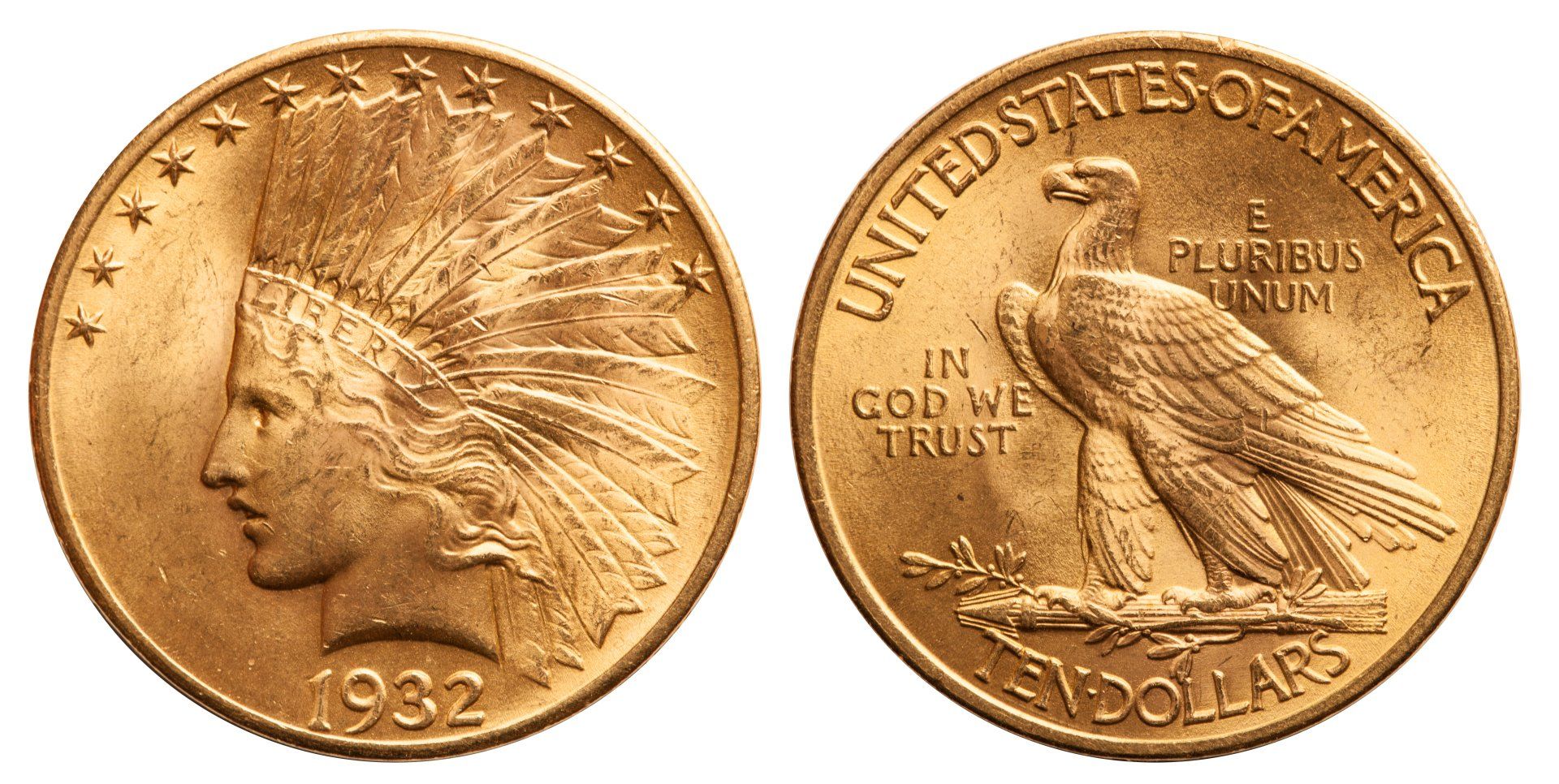The 1907 Indian head gold eagle
Augustus Saint-Gaudens' Legacy
In 1905, President Theodore Roosevelt commissioned sculptor Augustus Saint-Gaudens to redesign the nation’s coinage, which Roosevelt felt was “atrocious hideousness”. He wanted to bring an artistic touch back into the coins, feeling that the current coins were bland and boring.
Saint-Gaudens was suffering from cancer and was unable to complete his work before he passed away. The coins that he nearly finished were the eagle and the double eagle, which were actually finalized after Saint-Gaudens’ death in 1907.
Indian Head Gold Eagle Early Design
The Indian Head Gold Eagle features a representation of Lady Liberty on the obverse (the front), donning a Native American headdress featuring the word LIBERTY, 13 stars above her head representing the original thirteen colonies, and the date of minting directly beneath the portrait.
Saint-Gaudens based the Lady Liberty on a previous sculpture he had made but not used in the
William Tecumseh Sherman Monument. It’s said that the bust of Harriet Eugenia Anderson also inspired Saint-Gaudens for this piece.
Initially, this design did not have Lady Liberty wearing a headdress, but Roosevelt insisted on adding it to the design of the coin, as he felt it was “distinctly American, and very picturesque”. Art historian Cornelius Vermeule stated that the Indian Head eagle “missed being a great coin because Roosevelt interfered” with the design.
Originally designed for the one cent piece, Roosevelt liked it so much he decided to have the design put on the $10 Gold Eagle instead. Saint-Gaudens then modified the design for it to fit on a larger coin.
Tragedy Strikes
After some issues with striking the coins, as they were too high of a relief to be struck properly by the machines, the design was modified to a lower relief; these were still too high to be struck. Unfortunately before the design could be finalized, Augustus Saint-Gaudens succumbed to the cancer he had been battling for years and passed away.
Saint-Gaudens’ assistant Henry Hering finished modifying the design for a lower relief, and on November 4, 1907 the pieces began to circulate; although Mint Director Frank A. Leach did not receive formal approval to issue the coin until December 19.
The Public Was Not Happy
Shortly after the coins started circulating, articles began to appear in the newspapers criticizing the omission of the motto “In God We Trust” and not long after that, complaints from the public began to roll in to the Mint.
The motto had been omitted from the coins because Roosevelt believed that using God’s name on coins was sacrilegious. He had confirmed with government lawyers that no law required the mottos use. Saint-Gaudens also had no issues with leaving the motto off the coin, as he wanted to have minimal text. According to his son Homer, Saint-Gaudens was of the mindset that “the motto was an artistic intrusion not required by law, he wholly discarded it and thereby drew down on himself the lightning of public comment”.
In response to the public’s outrage, the House of Representatives passed a bill ordering the use of the motto ‘In God We Trust’ on the eagle and the double eagle--which also did not include the motto--in March 1908.
Shortly after in May, the Senate followed suit, and upon finding public opinion against him, Roosevelt signed the bill into law that month. Chief Engraver Charles Barber placed the motto on the reverse of the coin, just to the left of the eagle.
Barber also made other small changes which according to numismatic writer Walter Breen, none of which “are defensible as improvements, unless one insists that more of the first U in UNUM had to show. Nor is striking quality increased.”
The Final Issues of the Indian Head Gold Eagle Coin
The gold coin was struck every year from 1907 to 1916, when due to World War I, gold pieces were not needed to be struck. The $10 gold eagle was struck again in 1920 at the San Francisco Mint, in 1926 at the Philadelphia Mint, 1930 at the San Francisco Mint again, and final issues of the coin were struck at the Philadelphia Mint in 1932 and 1933.
In 1933, President Franklin Roosevelt signed Executive Order 6102, ceasing production of gold coins and their release from the Treasury, and making it illegal to own more than a very small amount of gold such as small jewelry or numismatic coins of historical significance and collector value.
The story behind the Indian Head gold eagle is a rather interesting one, with quite a few ups and downs, and it is unfortunate that it seems the coin has not gotten quite the attention it deserves.
How do you feel about the Indian Head gold eagle? Do you like the design? Is it something you would include in your collection? Let us know in the comments!



